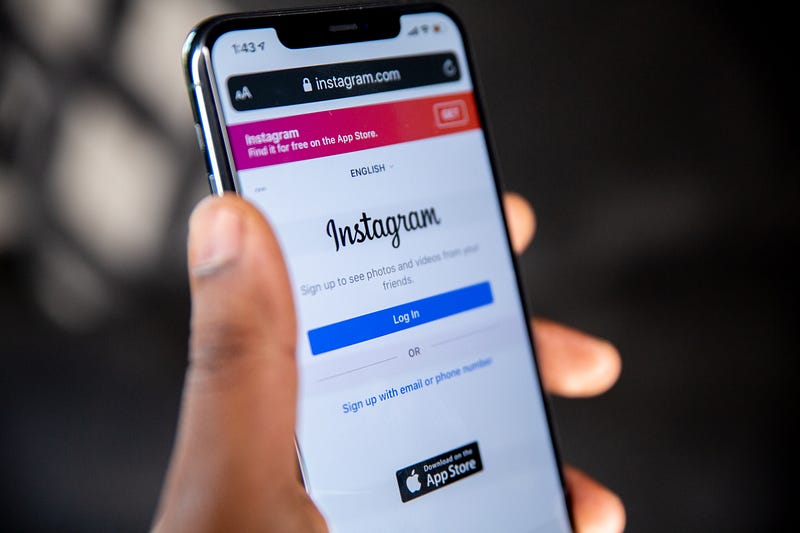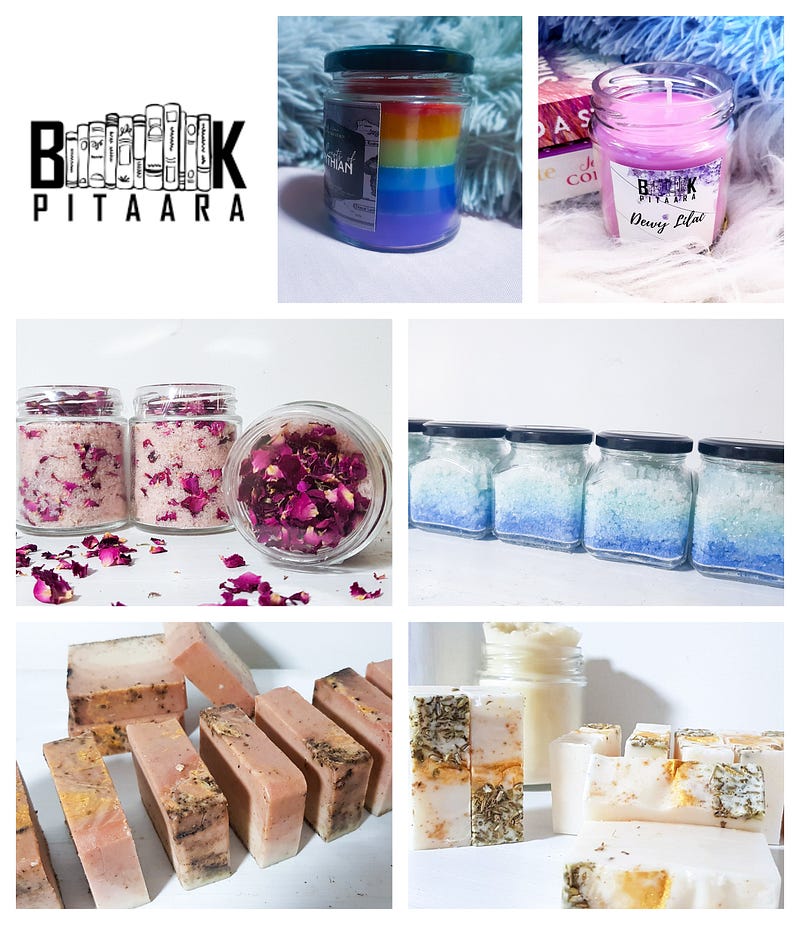How to Successfully Run a Small Business on Instagram
Stories from 4 amazing women who’ve done it

Stories from 4 amazing women who’ve done it
If you run a small business or are an entrepreneur looking to build a strong personal brand, Instagram could be the best platform to market your work. Here are some statistics that show what makes Instagram such a powerful tool:
- As of July 2020, there are one billion active users on Instagram with 500 million of them turning up daily.
- Over 130 million users engage with shopping posts on a monthly basis.
- The brand engagement rates on Instagram are 10x higher than Facebook.
- One-third of all Instagram users have purchased at least once through the mobile app.
Given these encouraging stats, how does one go about setting up a small business on Instagram and getting users to buy their products?
To answer this question, I reached out to four small business owners on Instagram and asked them their stories. This article is about the tips and hacks I learned from them and how you can use Instagram to grow your businesses and reach more people.
Before we get started, I would like to introduce you to these wonderful women who have built a business from scratch and are single-handedly establishing their empire. They have provided such a valuable perspective on what it takes to run small businesses on Instagram.
Reading Owl Creations
Started by Neha Garg as a small business that sells beautiful customized book sleeves, this was initially set up as a platform for her mother, Krishna Garg to showcase her talents, Reading Owl Creations has evolved to produce a variety of fabric merchandise including tote bags, Kindle covers, laptop covers, and cushion covers. This mother-daughter duo has made and delivered more than 1,000 different product pieces in a couple of years.

Whispering Flames
Afia Vasaiwala was only 16 when she started Whispering Flames back in 2017. She loved looking at the fancy book-themed candles made in the US that were sent to India for the hefty shipping price of $60. This, along with encouragement from her mother, was the biggest motivation for starting her own candle business.
After three years of turning her hobby into a well-loved business, Afia feels Instagram is a great way for her to channel her creativity.

Book Pitaara
Book Pitaara is India’s First Bookish Wellness Box founded on 2nd August 2018 by Indie Author Nikita Raikwar.
“I strongly advocate mental health and wellness and I also recommend reading as a healthy hobby. So, I decided to come up with a box that caters to both these niches, reading and wellness and that’s how Book Pitaara was born.”
When they started out, they had 15 orders in the first month, and now have built a successful business shipping out a few hundred orders each month. They offer monthly boxes filled with bookish goodies and merchandise for readers and lovers of wellness and self-care.

Pal’s Premise
Sai Pallavi believes that bookmarks are one of the most indispensable accessories for a bibliophile. Despite this being the era of e-books, many readers crave the touch and scent of physical books. This motivated her to enhance the reading experience by crafting personalized bookmarks.
She makes designs according to the customer’s preferences, ranging from kid-friendly designs to sassy quotes and logos. Her hand-drawn patterns are draped with exquisite colours, acrylic paints, and caffeine with the mandala touch.

The Perks of Starting on Instagram
While several new businesses start a store on Etsy or set up their own websites, starting out on Instagram can be great not just for testing the waters, but also for establishing a name for yourself.
The personal touch
Neha from Reading Owl Creations started her blogging actively on Instagram. She networked with several book enthusiasts and established a camaraderie. When the idea of starting a small business came to her, she already had the platform and a ready friend circle to pitch her idea to. Instagram also provided a way she could personally connect with the users.
“I have tried to take the business to a website through platforms like Instamojo and Etsy. But the kind of customisation we do, it is impossible without talking to the customer. Even though it is overwhelming at times, I feel this conversation part brings us closer to the stories that people share.”
Finding a community
The best thing about Instagram is that a few relevant hashtags can get your work in front of potentially thousands of like-minded people. Sai Pallavi of Pal’s Premise found this her own way. She got her first spurt of orders when she started posting pictures of her hand-painted bookmarks on Instagram.
“Starting on Instagram was not intentional. It just happened. One day I posted about a bookmark I made for myself, and, the next moment, I had some people message me about buying something like that. Then the ones who got it posted on their Instagram and I got more orders. So pretty much everything happened organically.”
Putting the Word Out
While different strategies might work for different small business owners, here are some marketing tips that can be useful to grow your brand on Instagram.
Happy customers go a long way
Pallavi mentioned that word of mouth is very valuable. If the customers are happy, they want you to succeed. As a small business just starting out, the priority should be to satisfy the customers.
“Small gestures like leaving a personal note or sending one extra bookmark go a long way. Although it is not necessary for me to do that, these gestures are appreciated a lot, and, in return, the customers support me by promoting me on their social media and mentioning me to their friends.”
Understanding consumer behaviour
A similar sentiment is put forward by Nikita, the founder and CEO of Book Pitaara. She believes that it is important to learn from the community on Instagram and understand what kind of products they need by studying the posts they make.
“As a brand, you must learn consumer behaviour, things like what kind of products are they purchasing, what kind of books or genre they have the most interest in, what kind of brands do they most interact with.”
Honesty and consistency are the keys
Afia Vasaiwala, the founder of Whispering Flames, believes that honesty is what customers are looking for.
“I personally haven’t invested a lot of time or energy in marketing because I do not mind organic growth. My brand has always represented who I am as a person, so the essence remains the same. I guess consistency is quite important, the essence of your business should always stay the same even through the changes you make over time.”
Neha resonates a similar sentiment about putting the word out.
“I am active on the page. The more content I post, the more engagement I get. It works like any other blogging platform.”
Reaching the target audience
One of the biggest issues with having an Instagram business is building an authentic and diverse range of audiences and driving them into potential leads. As a brand, if you don’t know what to talk with your audience, they will unfollow you and get back to their life. You’ve got to give them a reason to visit your page.
Nikita says that Book Pitaara faced a similar issue and it took some serious brainstorming to get past this.
“We started sending our weekly recommendations, shared inspirations, gave shoutouts to accounts we love and created interactive Q&As for our customers related to books and the entirety of Bookstagram.”
The Biggest Roadblocks
While Instagram is an amazing platform to grow your small business, it is inevitable that you will hit certain roadblocks.
Managing it all alone
Afia said that she was fortunate that she found a supportive community and considered all the roadblocks she encountered along the way as learning experiences. However, if there is one problem she could live without, it is the logistics.
“I do not miss my Saturday morning post office runs with the variety of issues the technology and the postal system bestowed upon my already stressed brain!”
Neha has a similar experience and says that managing the flood of personal messages was the biggest challenge to conquer on her own.
“So many people would ask you a million questions but would not be converted into customers. That ratio is also underwhelming at times.”
Pallavi faced a similar issue. While running a business on your own is fun. managing the surge in orders after one post goes viral can be difficult to manage single-handedly. However, this too could be used as a stepping stone to understanding consumer behaviours more intimately.
“Once the first order was placed and started reaching out through people’s stories and posts, I saw a surge in orders daily which made me stick to my deadlines and do some analysis on the most-sold pattern and eventually stocking up that pattern considering the demand.”
Pricing and quality
While running your own business and selling your crafts can be exhilarating, it can get demotivating if people constantly try to bargain and get you to sell for a lower price than what you quoted. Pallavi was candid when she brought this up:
“It is hard to negotiate with some customers, as their concerns dealt with pricing. While pricing the product, I had to explain the various elements involved in the making, from the quality of the raw materials used to the time taken for the art. Thankfully, this made them rethink and agree upon the pricing.”
Making the products visually appealing
Since the engagement on Instagram is based mostly on photographs, making their profile look aesthetically appealing can be a challenge for many. Of course, this can be taken up as a project too and it is possible to always challenge yourself and grow. As Nikita mentions,
“Not everyone has a knack of clicking gorgeous pictures or editing them. If you look at the pictures on our page from two years ago, we were no less than a laughing stock, but over time, we have tried to follow photography rules, learnt tips and tricks, and finally took the liberty to download Adobe Lightroom (makes editing easier).”
What Not to Do as a New Business on Instagram
I asked these amazing ladies what their perspective on this was, and got an amazing list of what to avoid if you are looking to build a name for yourself on Instagram.
From Neha:
- Don’t bite more than you can chew. Take orders that you know you can complete. Give proper timelines related to production and delivery.
- Focus on quality. Even if you have to throw out a ready piece multiple times, don’t send something that you would not buy yourself. We have a pile of sleeves with maybe a small mark somewhere but we always make a new one and send out the best.
From Nikita:
- When you have a creative business, you are on a treadmill of opportunities that spins round and round your head. However, if you don’t know enough of which of these creative art pieces would sell, none of that creativity is lucrative. Learn, adapt, improvise!
- Don’t succumb to what the majority is doing. Don’t let your competitors fool you into thinking what they are selling is a hot cake for everyone. Be original. Don’t copy. Make your own mark, create your own USP.
- Before you decide to be an entrepreneur, look out for six months’ worth of investment at the very least to ensure you reach the break-even stage. It took me four months to reach break-even and another six to reach profits.
From Pallavi:
- Never quote less. Who knows better about the materials involved and the time invested other than the artist? You deserve monetary compensation for your art.
- Don’t spend too much on marketing before reaching out to your friends and your social circle.
- Don’t take orders that you can’t deliver on time. Commit only if you are sure about the delivery time.
The Best Kind of Payback
Art is powerful and has the incredible potential of touching the lives of the people who need it the most. It touches both the artist and the ones who receive the art, sometimes changing their lives forever. Afia experienced this first-hand.
“While I get several heartwarming messages almost on a daily basis, the ones closest to my heart are the ones about my mental health candles. Whenever someone reaches out to me, shares their story and tells them that these candles helped them deal with difficult moments better, I have this indescribable feeling of contentment, almost as if I am fulfilling my life purpose.”
Indeed, art is sometimes the only source of respite in challenging times. Pallavi was overwhelmed by a message she received from a happy customer who said,
“Your artwork is an eye treaty and spreading positivity during these unprecedented times.”
Anyone who owns a small business would know that more than the money, the joy that goes into seeing a complete stranger smile on seeing your work is what makes the whole journey worthwhile. I think Neha captured this sentiment best when she says,
“When people tell us that it brought a smile to their faces, that’s the best thing to hear. We may not be doing something world-changing, but it always great to know that we touch people’s hearts.”
How You Can Apply the Lessons
Based on the experiences of these four amazing women who have built fairly successful small businesses on Instagram, here are the key insights about starting and maintaining your own business:
- Instagram is a great way to push your business forward as you can personally connect with your customers. It can also be like a personal blog where you channel your creativity and make a name for yourself.
- Customer satisfaction goes a long way in making sure the customers return and also refer your business to their contacts.
- Spending time scrolling through relevant hashtags can give you a good idea of what your target audience desires, so you can craft your products or services accordingly.
- Being honest to yourself and posting consistently on the platform goes a long way in establishing credibility and building a follower base.
- Managing a small business can be challenging, especially if there is a sudden surge in orders. However, the appreciation from happy customers makes the effort feel worthwhile.
- Negotiations can make pricing hard, but you have to believe that your work has value and not give in to customers who want to bargain for a lower price.
- Focus on quality and originality. Never stop learning and improvising.
- Be patient if you don’t make money initially. It takes time to break even and even longer to make profits.
Most importantly, if you run a small business, count your returns in the impact you are bringing to the customer’s life. Creativity is a gift and art has the power to empower and motivate. Cherish it.
